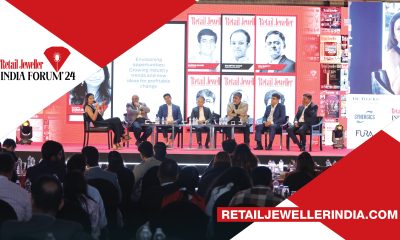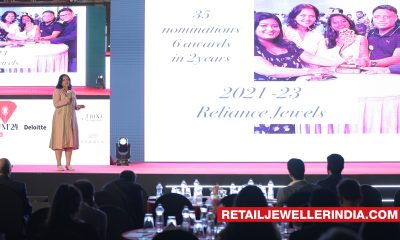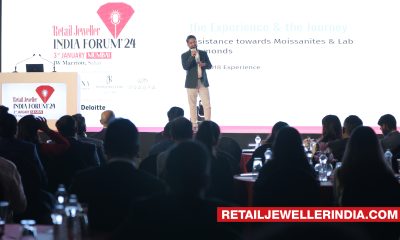Cover Feature
Generative AI can significantly streamline India’s jewellery sector operations

The keynote session by Praveen Govindu, Partner, Deloitte India, shed new light on potential opportunities in Tier cities, informing 60% of total orders in jewellery e-commerce come from Tier II and Tier III cities in India, which will add over 110 million households to this segment in the next 8-10 years
Govindu painted a promising picture of the Indian retail market, which is almost a trillion dollars and growing at a rapid pace. He projected that the jewellery industry is poised for significant growth in the next 7-8 years revealing 55% of the retail contribution is happening through wedding purchases and the increasing trend of festival jewellery shopping, instilling optimism in the audience about the sector’s future.
The session named ‘The future of jewellery retail in India: Redefining jewellery retail through people, products, processes and technology’ focused on the immense progress that India’s jewellery sector has made in the overall retail milieu. “About 60% of total orders in e-commerce come from Tier II and Tier III cities. India will add over 110 million households to this segment in the next 8-10 years. From a supply perspective, almost 35% of India’s jewellery sector is organized, and that proportion will grow.” He maintained non-metro cities have a significant role in this regard, as nearly 40%-50% of e-commerce orders for luxury brands overall are coming from non-metro cities, due to increasing Internet penetration.

Govindu said meaningful designs and story-telling are essential in the luxury jewellery market. He pointed out how fast the penchant for personalization is catching up. Deloitte is helping one of the largest national chains in the country go omnichannel finding six forces shaping the retail industry now. They are “economic power and policy, changing consumers, society and culture, exponential technology, industry upheaval, and climate and planet,” Govindu said. One of Deloitte’s essential tasks is to lower inventory at the store level of the chain store brand, which can be done with omnichannel, which reduces inventory and improves ROI.
According to Govindu, the three vital pillars of a successful omnichannel process are customer, inventory, and sale. Govindu said that technology will optimise the cost of customization and marketing in cases of generative AI in jewellery. “Today, companies are investing in business models which are interactive platforms for suppliers, logistic partners, insurance companies and customers. Regarding sustainability, data suggests that Indians are by far the most affected by climate change and are more into buying exclusively from sustainable brands,” he added.
Govindu underscored the power of generative AI, citing examples like Zomato and other food aggregator brands using conversational AI to enhance customer experience. The key takeaway, he stressed, is for jewellers to recognize their pivotal role in this technological shift. By inputting their data, they can train these systems and generate original, impactful content, empowering themselves in the digital age.







 Daily News2 months ago
Daily News2 months agoPC Jeweller to subdivide shares with 1:10 stock split amid record-breaking growth

 Daily News2 months ago
Daily News2 months agoKalyan Jewellers unveils limited edition ‘Pushpa’ collection ahead of Pushpa 2 release

 Daily News2 months ago
Daily News2 months agoBhima Jewellery sets Guinness World Record with ₹200 Crore Single-Day Sales on centenary celebration

 Exclusive2 months ago
Exclusive2 months agoMK Jewels’ Pink Tag Offer sparks 20 per cent sales growth across stores























